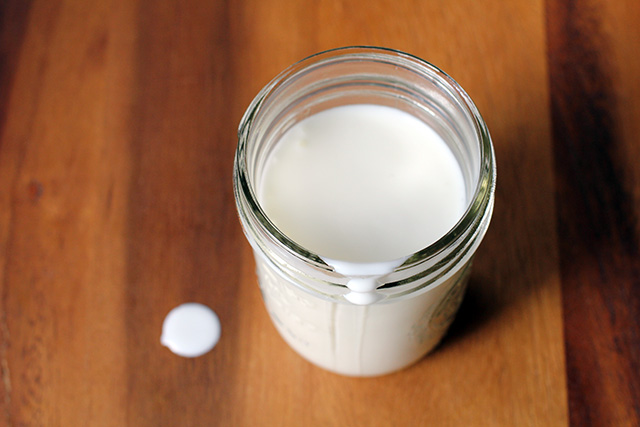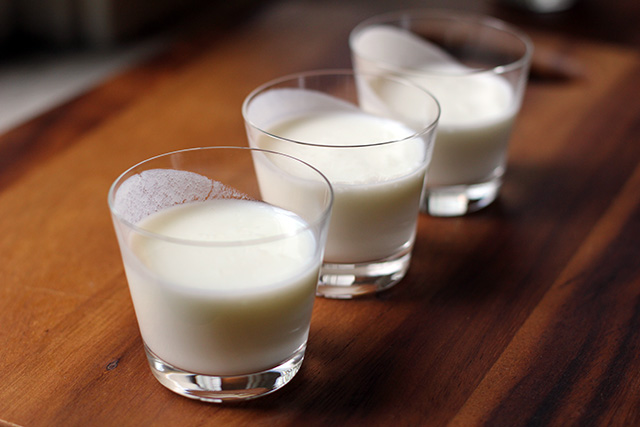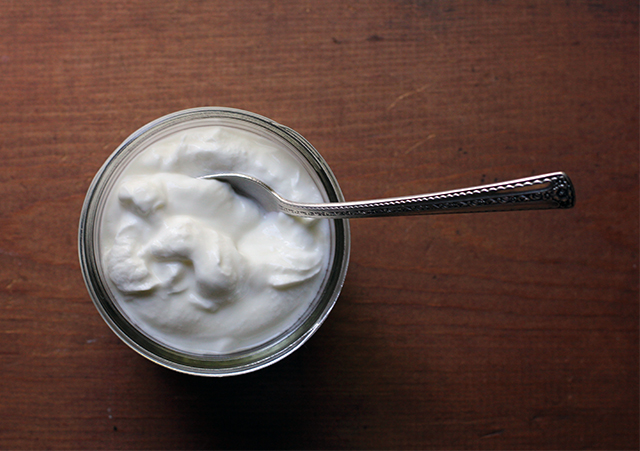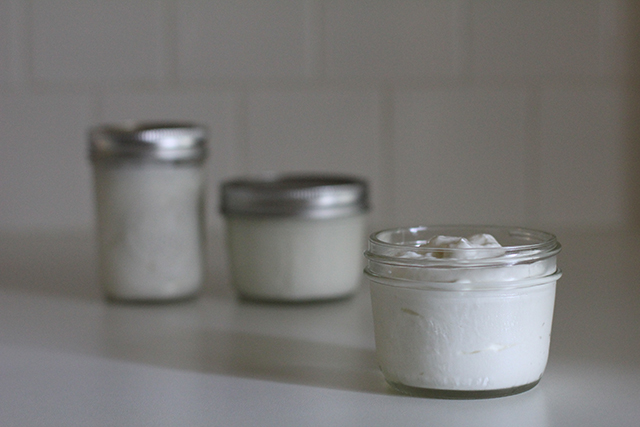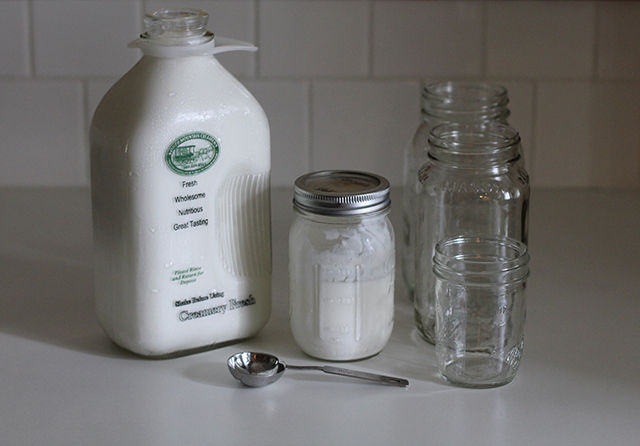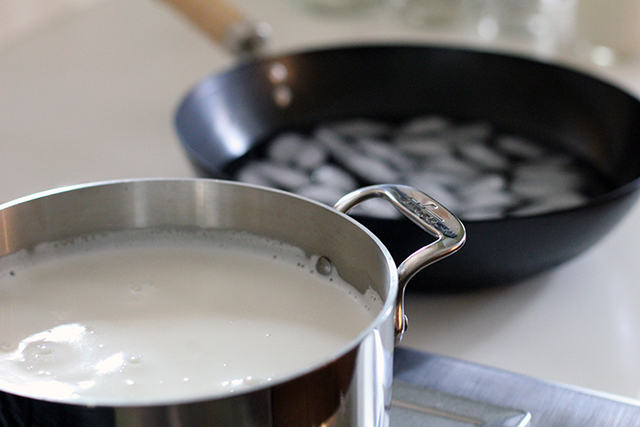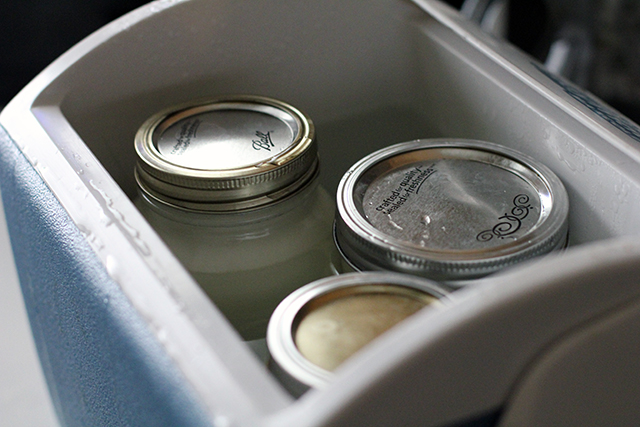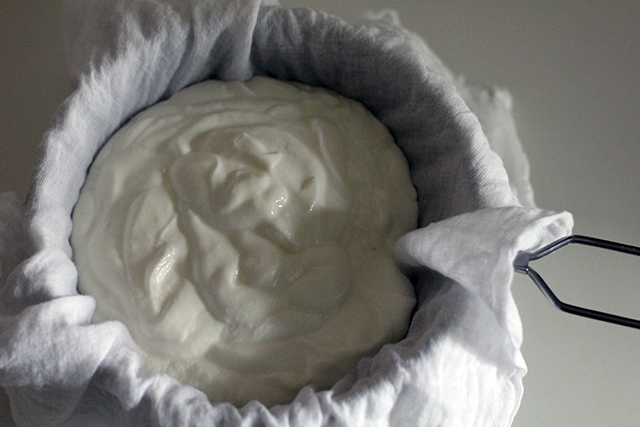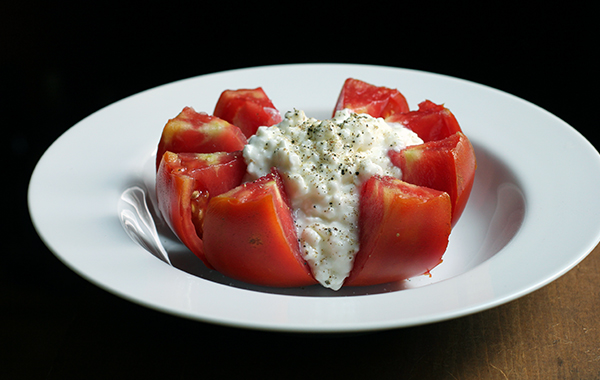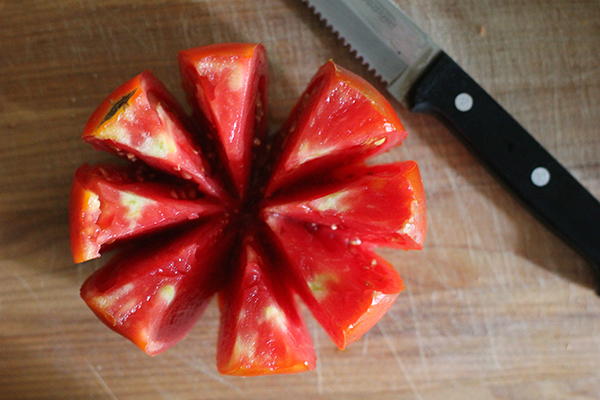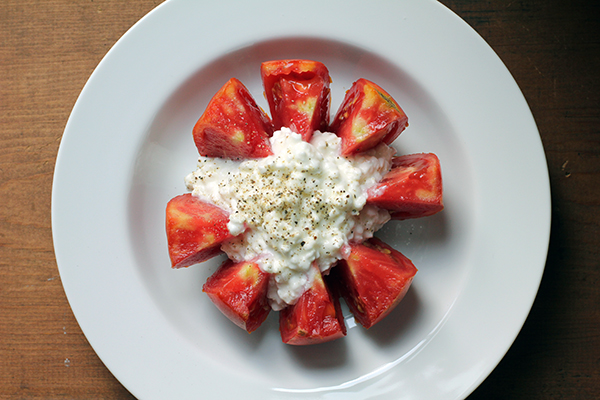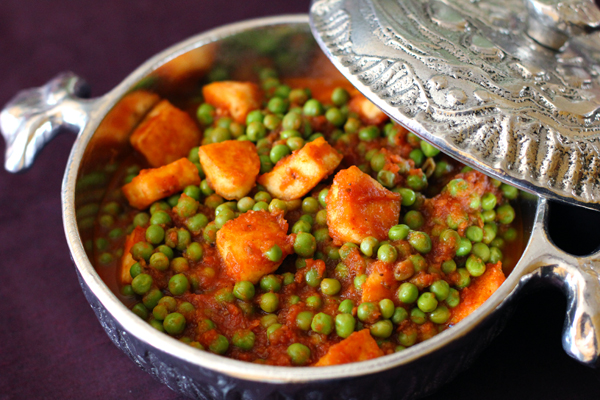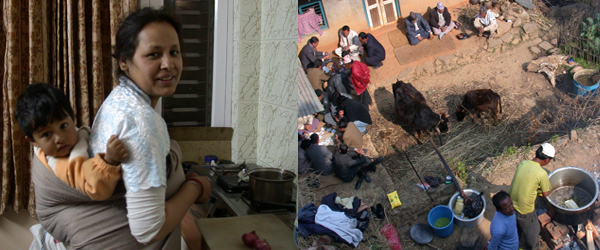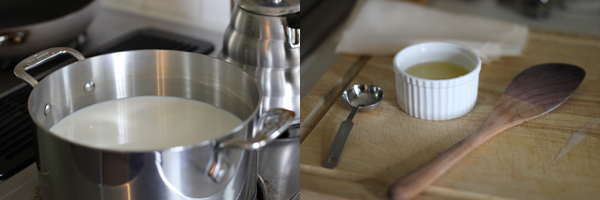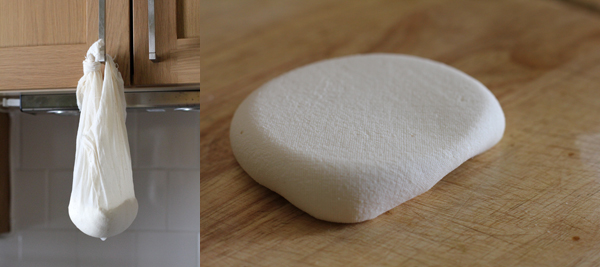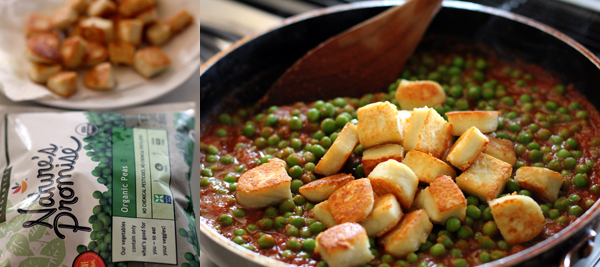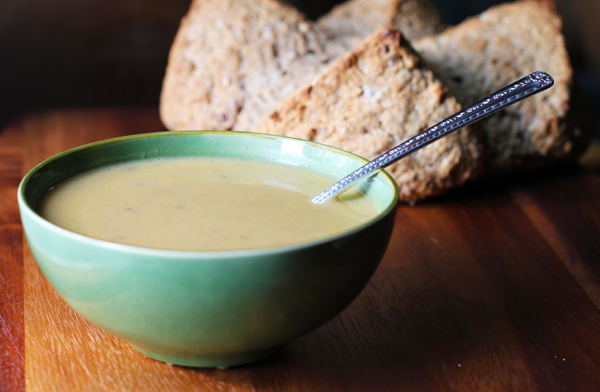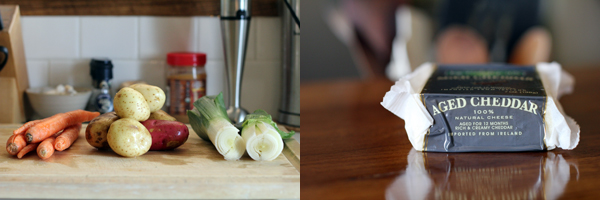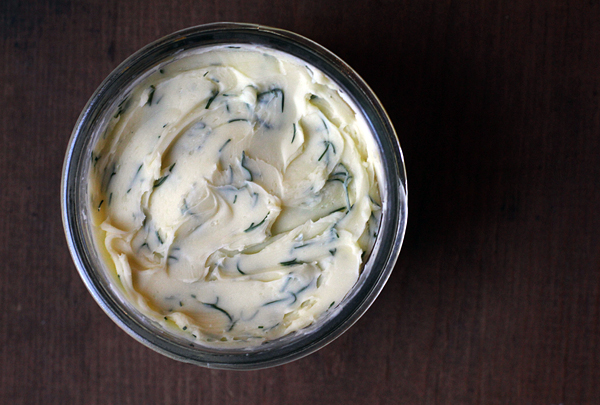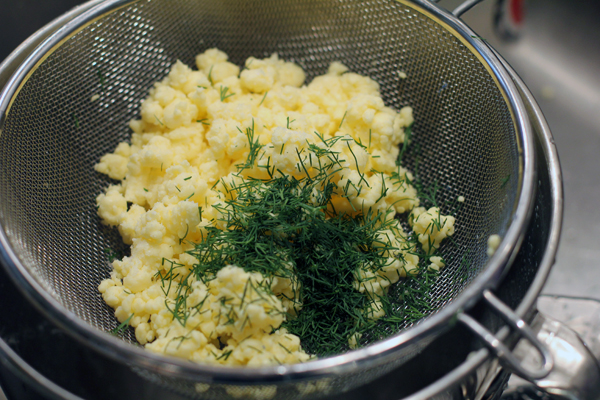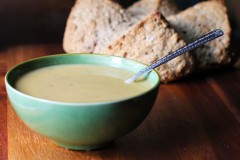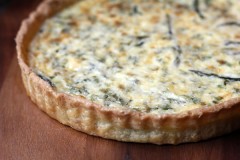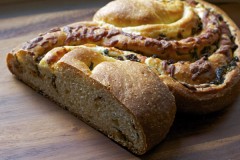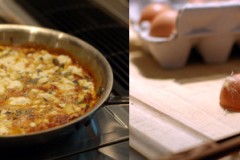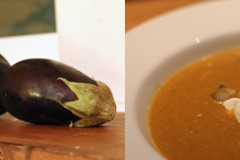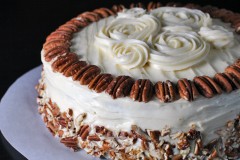The first time I used a stand mixer to whisk my own butter out of heavy cream, I thought I could spread the results on my bread and bake with them, too, since I also then had just enough of what I thought was buttermilk left over to make a loaf of Irish soda bread. How neatly economical! However, I quickly discovered that what we mean when we say “buttermilk” today is a bit muddled, and that the thin white liquid that remained behind in my bowl after the butter was made was quite different from the type of buttermilk the recipe assumed I was using.
In 2012, when you purchase buttermilk from your local dairy or grocery (that is, if you can even find it—I often discover a carton or two wedged somewhere near the 7,000 flavors of fake coffee creamer) it’s a cultured dairy product that has a tart and slightly sour taste. It is often called for in baking (the acidity activates baking soda), is used to make dressings and sauces, or can simply be drunk by the glassful (though you won’t catch me doing that). Depending on what type of milk was cultured, it could be a creamy full-fat or 2% version (similar to a thin yogurt), or a thinner skim option. Label reading may reveal the addition of other thickeners—especially in the no-fat versions—such as tapioca starch, guar gum, locust bean gum, carrageenan, and/or carob bean gum.
Back in the day, however, buttermilk was a different beast. Based on my reading, it seems the story is this: Raw milk was not churned right away since a certain volume of cream would need to be collected and the milk and cream needed time to sit and separate. Bacteria naturally found in the milk would multiply, the milk would sour, and the “buttermilk” that was left behind after churning was, as a result, not the same as what is left after DIY-ing your own butter from pasteurized and homogenized milk. And neither of these versions is the same as the cultured buttermilk sold commercially at your local grocery today.
To DIY cultured buttermilk, you need a starter that contains the living bacteria required to ferment new batches—similar to making yogurt. If you have access to raw milk, you can start your own buttermilk culture, but you can also purchase freeze-dried starters (either to establish a mother culture or of the direct-set, one-time-use variety) or simply use store-bought buttermilk to culture more milk. You need to make sure the cultures are still active, however. When testing these various options, I didn’t have a problem using my local store-bought option as a starter, but the fresh buttermilk from a local dairy and the freeze-dried starter produced a quicker clabbering and a significantly better tasting buttermilk, in my opinion.
Whole vs 2% vs Skim: As you might expect, the buttermilk gets increasingly thick and creamy as you move from skim (left above) up to whole. Tasting it straight, the tartness of the whole-milk version is balanced by the rich, yogurt-like creaminess of the full fat milk, and that is somewhat true for the 2% version as well. The skim is very tart, thin, and less balanced to me, and I cannot see drinking this or recommending it for use in salad dressing unless personal taste or nutritional concerns make it preferable. For baking applications or in soups, however, any of these could be used.
As an additional experiment, I couldn’t resist attempting to culture some modern “buttermilk” after making butter (sort of the reverse process of old fashioned buttermilk) just to see what I might get. The result was as thin as the skim milk version, but the taste was much more drinkable, the tartness of the beverage balanced in this case not by a creaminess but by a buttery fattiness that seems to still infuse the milk. Just as old fashioned buttermilk is often noted to have contained a few bits of stray butter left behind after churning, the same could be found here. With a little salt, I could almost see sipping it. Almost.
And honestly, with so many jars full of buttermilk, in the end I also figured I might as well make my first batch of crème fraîche. This could be a new addiction.
A word on culturing temperature: Keeping the milk at the required warm room temperature is a challenge in my house now that the colder weather has set in. If the kitchen is warm from a marathon of weekend cooking, it’s not so hard to find a cozy 76°F corner for the bacteria to do their thing, but otherwise I have to get creative. Some cooks have recommended placing jars on top of the fridge or on some other warm appliance or high shelf in the house. I found a kitchen cabinet that runs warmer than the rest of the room due to location and had good luck (if slower clabbering times) at about 70°F there.
The Verdict
I was already a buttermilk fan, not only for baking but also for exceptional homemade salad dressings, but I don’t use enough dairy to make purchasing large volumes of different types worth while. By culturing my own buttermilk, I can have a small yet steady (and additive-free) supply to meet my needs, and use the rest of my weekly whole milk purchase to make yogurt, cheese, or just to lighten my coffee. You can make larger (or smaller) volumes as needed. I use a ratio of one tablespoon starter for every cup milk with reliable results. Unless your culture was not designed to be perpetuated (some freeze-dried options fall into this category), you can reserve a bit of each batch to culture the next. Some recipes indicate that you should pasteurize your milk first or at least warm it to 76°F. I added my starter directly to the cold milk and didn’t have any issues (or extra dishes to do).
DIY Cultured Buttermilk
2 tablespoons buttermilk (store-bought or activated dried starter)
2 cups milk (whole, 2%, or skim, depending on your nutritional needs and preferences)
In a mason jar or other glass container, thoroughly mix the starter and milk. Cover with a coffee filter or piece of cheese cloth (do not seal tightly with a lid) and leave to culture out of drafts at a warm room temperature (between 70-78°F is recommended) until milk has clabbered (10-24 hours).
To test if the milk has thickened, tip the jar slightly. It should move away from the wall of the jar as a single mass. Just as with yogurt making, once the milk sets, it will get more tart the longer you allow the culturing to continue.
Refrigerate to halt culturing for at least six hours. Stir before using.
This recipe and post was created for my “DIY vs. Buy” column on Serious Eats.

